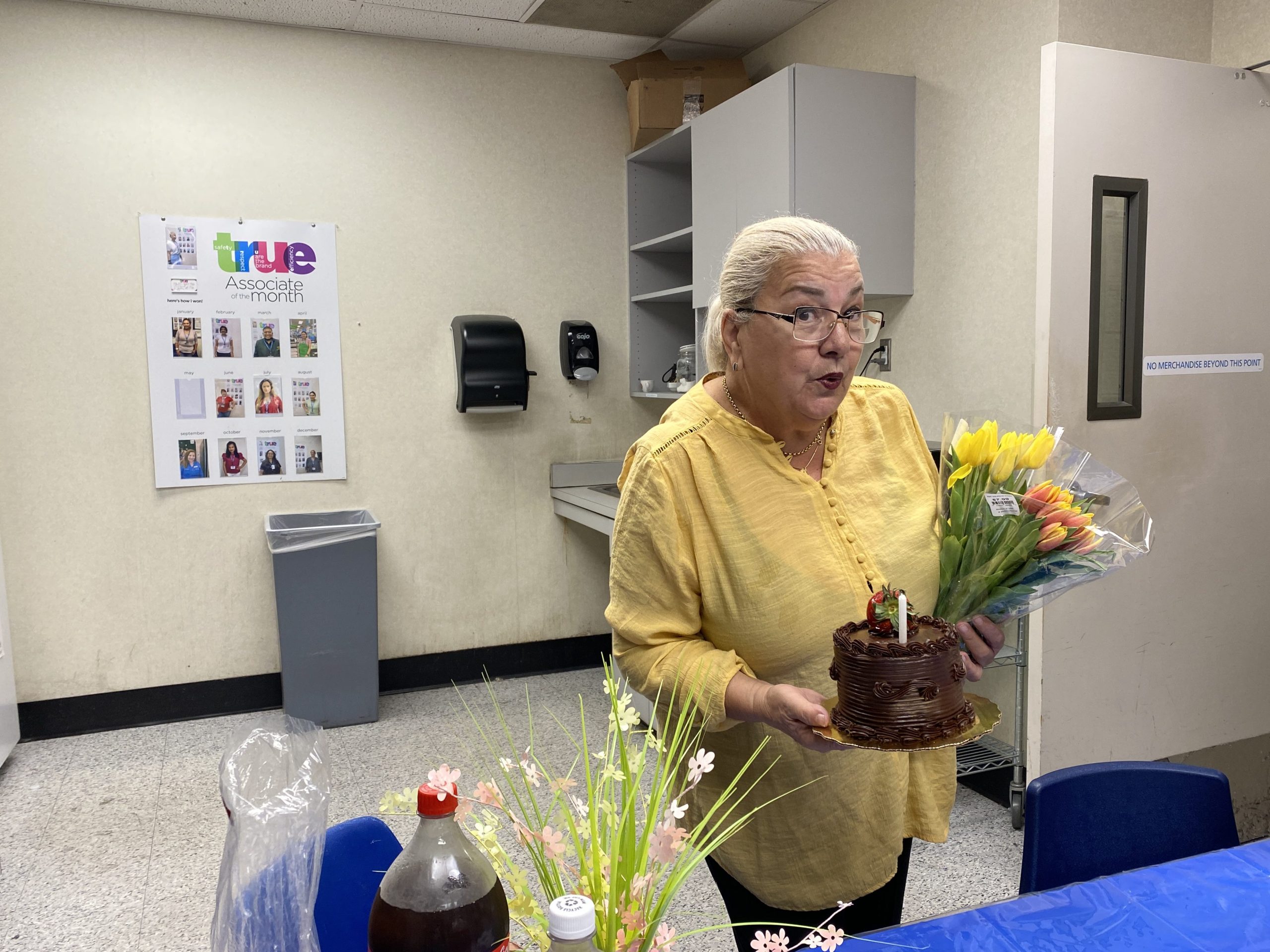Alaide Aquino works the busy evening shift at a Ross department store in Kendall. Though on her feet for eight straight hours assisting customers, she wears a smile, knowing she is chasing a dream. But the dream is elusive, and her golden years aren’t as golden as she hoped they would be.
Like many other immigrants, she came to the United States looking for a better future with the promise of the American dream and the happy retirement that comes with it.
But the 70-year-old Brazilian can’t afford to slow down.
Aquino achieved the required 40 credits for Social Security two years ago, but she didn’t retire then. Instead, she planned to retire this year.
“I waited until I was older to get more money, but it turns out it is not enough to pay my rent, so I will have to keep working.”
In 1999, Aquino and her family moved to Miami. She was 45 with a bachelor’s degree in business administration and a master’s degree in marketing. She decided to take care of her daughter before going back to work. In 2010, her daughter had grown up, and Aquino joined Ross Dress For Less to work for her retirement years.
According to the Social Security Office of Retirement and Disability Policy, “Under current Social Security rules, workers who have immigrated to the United States are likely to receive lower benefits than natives.” This is because they started to earn credits later in their lives.
“Our big frustration is that we thought we could retire, stop working, and travel around the world, but we can’t,” says Aquino.
Aquino says her monthly household expenses range from $2,500 to $3,000 without including rent. When she inquired about her monthly social security income, she was told she would receive $1,500.
However, According to the Internal Revenue Service, Social Security Benefits are subject to taxes based on income.“To determine if their benefits are taxable, taxpayers should take half of the Social Security money they collected during the year and add it to their other income. Other income includes pensions, wages, interest, dividends, and capital gains.”
Anything over $25,000 is taxable for single filers and for married filing jointly; in Aquino’s case, anything after $32,000 is taxable.

Moreover, many senior Hispanic Latinos struggle to save for retirement due to a lack of financial literacy or limited accessibility to retirement planning resources.
NBC News and a Morningstar report stated, “Only 31% of Hispanic households with employment income participate in a retirement plan, compared to 51% of white households. Private retirement plans like individual retirement accounts aren’t filling the gap. Only 8 percent report having an IRA or similar plan.”
Aquino says that her only retirement vehicle is social security because she did not think earlier in her life about an Individual Retirement Account (IRA) or a 401(k).
“When I started at Ross, they didn’t have the 401(k) benefit,” she says. “It was too late for me to join it when they started to promote it in the company a few years ago.”
However, Aquino is not the only one struggling with the same situation. While many seniors struggle with financial issues, isolation, and complex access to health care, older immigrants are often in a worse position than U.S.-born peers.
Olga Lidia Sanchez is a 64-year-old Cuban who arrived on Dec. 12, 1996. She fled an economic and social crisis in her home country and came seeking freedom. Her goal was to work hard to bring her family to join her.
Sanchez was 36 years old when she came to the U.S., and with limited English proficiency, she found two jobs simultaneously.
“In my first week in this country, I started working as a waitress,” says Sanchez. “Fifteen days later, I found a second job as a house cleaner to send money to my family in Cuba.”
During her 28 years in the U.S., she always worked two or even three jobs at the same time to cover her expenses. Once she achieved her goal of reuniting her family, she purchased a house.
According to NBC, “Instead of retirement accounts, they [hispanics/Latinos] tend to focus on low-yield assets, such as homes and automobiles.” Sanchez has no other savings vehicle, such as a 401(k), because she has always worked low-wage jobs without benefits for her senior years.
However, Sanchez cannot afford to retire due to the high cost of living in Florida. She works as a home health aide (HHA), taking care of two seniors, and as a store protection specialist in a retail store.
“I could retire now if I want to, but I do not think the retirement money will be enough If I stop working,” says Sanchez.
Still, financial problems are not the only challenges senior immigrants face during their golden age.

According to the Pew Research Center, “Hispanic Americans have long faced health care challenges in the United States, including lower health insurance coverage rates and less access to preventative care.” In comparison to native Americans, Hispanic adults have lower health insurance coverage and preventative care due to cultural and language barriers and higher poverty rates.
At the age of 41, Sanchez was diagnosed with breast cancer. Due to her income level, she could only afford Obama Care, also known as the Affordable Care Act. However, this insurance plan did not cover all her medical expenses, such as co-pays for specialist treatments. As a result, she had to make a difficult decision to sell her house to pay for her treatment.
After successfully beating breast cancer, she was diagnosed with thyroid cancer in 2023. Unfortunately, her small savings were exhausted on her treatments. As Sanchez recalls, her insurance only covered 80% of her treatment costs, leaving her to pay for the remaining 20% out of her pocket.
“I’m a alone woman; nobody else with me pays my disease,” says Sanchez. “ Right now, if I check my savings account, the maximum I will have is $40.”
Despite battling cancer, Sanchez continues to work to pay her bills, including rent ($1,200), car and insurance payments, and basic utilities.
Still, many people continue coming to the United States in adulthood. According to the Migration Policy Institute, “The immigrant population’s median age in 2022 was 47 years, making it older than the U.S.-born population, which had a median age of 37 years.” Many of them continue to come with college degrees but less proficiency in English, which later in their life transform into language and social isolation.
“Language barriers are a pressing issue for older immigrants, especially late-life arrival. Data from the American Community Survey indicate that over half (55.4%) of foreign-born older adults speak a language other than English at home while also reporting a limited proficiency in English.”
Claudia Londono is a 48-year-old Colombian who arrived in the United States in 2021. She holds a bachelor’s degree in speech and language pathology, but language barriers have prevented her from pursuing a career in her field. As a result, she works as a nail salon receptionist to pay her bills, often resulting in social isolation. Londono struggles to communicate in English and feels helpless during situations at work that require her to do so.
“I feel uncomfortable when I look at a person without knowing what she is saying to me,” says Londono. However, I either work full-time to pay my bills or take intensive English classes.”
Despite working hard and persevering, many senior immigrants still struggle to live a dream life in the U.S.
“Sometimes, I don’t have the strength to continue, says Sanchez. ” But I must remind myself that I have no other choice,” says Sanchez.

































